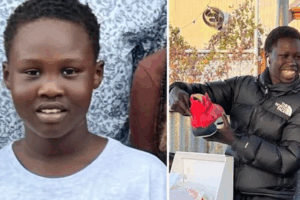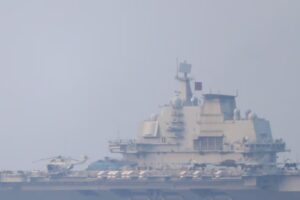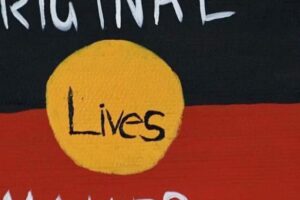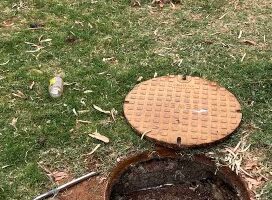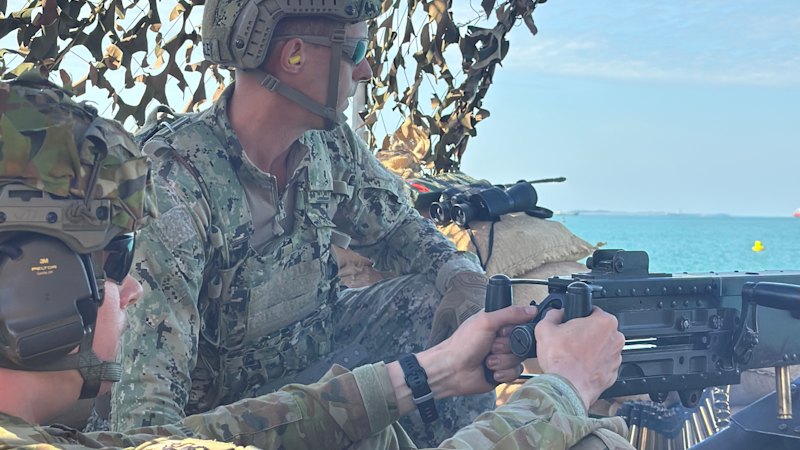
It’s a sweltering morning in the top end of Australia, where thousands of military personnel have swarmed Darwin’s coastline for the nation’s largest war games.
Members of the US Coast Guard bring reporters through Darwin’s turquoise waters off Larrakeyah Barracks on a fast ride through the security zone.
There’s chatter about the clear differences between how Australia and the US protect their coasts. Military vessels circle the water, a heavy presence as ordinary boaties cruise through.
Further along the coast, a group of soldiers has set up to practise firing. There, they wait for civilian watercraft to pass through, the boaties seemingly unperturbed by the military.
For many Darwin residents, the huge influx of armed forces to the region is not a surprise.
Troops practise live firing at Darwin for Exercise Talisman Sabre 2025.Credit: Cloe Read
And many of the troops have been here before.
But some say this year’s Talisman Sabre, the 11th iteration of the training exercise comprising mainly Australian Defence Personnel and members of the US military, is different.
There’s a bigger focus on “the enemy”.
Questions swirl in the political bubble about potential threats to Australia.
Talisman Sabre kicked off as Prime Minister Anthony Albanese met with Chinese President Xi Jinping in Beijing.
The Port of Darwin was leased to the Chinese-owned Landbridge Group in 2015.Credit: Glenn Campbell
Albanese has vowed not to back down on security measures, such as taking back control of the Port of Darwin, controversially leased by Chinese firm Landbridge.
Uneasiness hangs in the air in Darwin as journalists ask defence commanders questions regarding China surveilling the war games.
The Chinese have routinely monitored military training from afar in recent years.
Royal Australian Air Force Commander Louise DesJardins tells a media pack that while the ADF keeps an eye on maritime approaches, “at the moment we’re not happy to discuss the surveillance”.
The US Coast Guard moves through Darwin’s waters.Credit: Cloe Read
The ADF consistently pushes the message that the war games are not, in fact, targeted at any particular country, and are more for maintaining peace.
US Brigadier-General Shannon Smith, serving with one of Australia’s steadfast allies, points to the massive scope of the region and what he says are the complexities of international relationships.
Brigadier General Shannon Smith speaking in Darwin as US troops join the Australian Defence Force for Exercise Talisman Sabre.Credit: Cloe Read
“I’ve seen nothing but a consistent messaging from our administration and our national defence strategy that we’re committed to a rule-based order across the globe,” he says.
But reporters ask the troops if they feel prepared for war.
Many say they are.
They acknowledge what they’ve learned in previous exercises, sometimes serving on “attack” teams, other times in defence.
Thousands of troops practise live firing, field training, air combat and maritime operations in Talisman Sabre.
This stifling day in Darwin, Mark Hazlett, a captain in the Australian Army’s reserve 31st/42nd Battalion of the Royal Queensland Regiment, is serving in the “enemy” team.
For this exercise, both the attack and defence teams are operating in a fictitious country, “Belesia”.
Strategies employed are “open source, obviously derived from our knowledge of the operation procedures and tactics from world actors”, Hazlett says.
His personnel are tasked with testing the contingencies of the defence team, who represent Australia and its allies.
Captain Mark Hazlett serves in the 31st/42nd Battalion, and is a sergeant with the Queensland Police Service.Credit: Cpl Michael Currie
“That includes having a look at the vulnerabilities, and trying to exploit those as enemy combatants,” he says.
Soldiers get to practise detention, handling skills, vehicle checkpoints, and other tactics with personnel from the US, Britain and Canada. For the first time, the exercises have stretched to Papua New Guinea and Christmas Island.
Back home, Hazlett is a sergeant with the Queensland Police Service based outside Cairns. He’s been with the QPS for more than a decade.
Many of the things he’s done with the army reserves, however, are difficult to explain to the civilian world – like how to stop his hands trembling when he puts a detonator into a claymore mine.
“It’s a nerve-racking thing as it is. You’ve always got that feeling you’ve got to ground yourself … that’s why you hold it like a cigarette,” he says.
“But being able to then roll that back and set it off, is an incredible experience … you’re training to be a real soldier. You are a real soldier.”
Taine Waerea, a private who recently joined from Queensland, says he always wanted to wear the greens.
Loading
After months in uniform, he remembers setting up his first claymore.
“I’m an electrician … I don’t get to be trained in such weapons systems I get to be trained in here. I don’t get to blow things up,” he laughs.
As members of the 31st/42nd Battalion sit near the water for a brief break, Lance Corporal Selby Anderson and his sister Private Brooke Anderson, both train drivers in Queensland, reflect on their careers.
For them, military service is personal – their grandfather served in the Royal Australian Navy in Vietnam aboard multiple ships. The pair talk of army helicopters and vehicles, but also giving back to the community.
All those who spoke to this masthead are confident when they say Australia is prepared for any war.
“I’ll leave the politics to the politicians,” Hazlett says.
“We get a set of orders, and we plan to those orders. For this, we plan to the tactics that we know. We train and we continue to train.
“We will hopefully continue to operate in peace time.”
Start the day with a summary of the day’s most important and interesting stories, analysis and insights. Sign up for our Morning Edition newsletter.
Source
